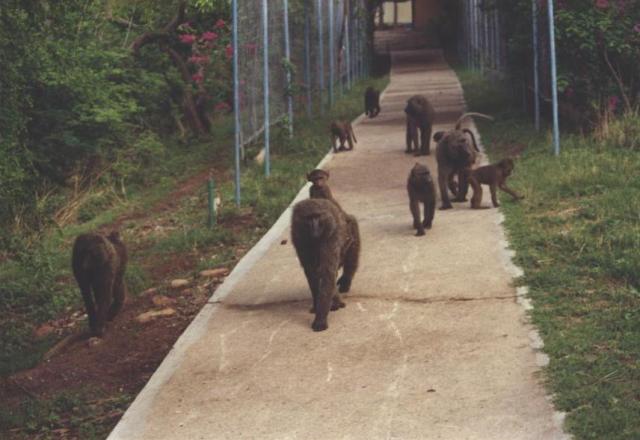The second most important language, a first language to almost one in five, mostly in the north is Hausa, an old imperial language. Many northern and central Nigerians speak it as a second language. Also widely spoken in the northern zone is Fulfulde Near Lagos in the southwest Yoruba is the predominant language, but it is still spoken by less than one in five Nigerians as a birth tongue.
The last significant language is Igbo While these four mother tongues account for the majority, a plethora of languages accounts for the about four in ten speakers. A few of these languages are spillovers from nearby nations, but most of them are very local languages with less than a million speakers each.
This diversity extends to religion. Perhaps a majority are Moslem; the north and center are overwhelmingly so. Christianity is strong in the southeast, while the indiginous religions still practiced by some southerners account for about one in ten.
There are more than ten cities with metropolitan areas of a million or more, and several smaller cities of historical note: Lagos is the largest, with over ten million metropolitan residents. There are three oil ports of world significance: Forcados, Escravos and Bonny. Yankara National Park, which includes the Wiki Warm Springs area, is the best known wildlife area in the nation. There are two World Heritage Sites, one near Oshogbo (the Osun-Osobgo Sacred Grove) and one in the rural northeast, the Sukur Cultural Landscape. While there have probably been people here since soon after we emerged from Ethiopia, only recent events are known--especially in the south. Most of the small ethnic groups have probably been around for hundreds of year. The ancesters of the Hausa and other Chadic languages migrated from the Horn of Africa more than 10,000 years ago. Later, Moslem Kanuri speakers moved into the northeast in the 13th century--part of the Kanem Empire's expansion. West of there Hausa was already spoken; Arabs recorded the term in the same century, and the Hausa city states coverted to Islam--probably spread by Kanuri speakers--starting in the fifteenth century.
Songhay, now spoken only near Nigeria's northwest borders, was introduced when the Songhay Empire expanded into northern Nigeria in the 16th century. Yoruba speakers may have moved south from near the river as the Sudanic states expanded. Certainly Ife, the Yoruba-culture-center, is most probably over a thousand years old, but knowledge of the area by literate people is quite recent. They were much longer aquainted with Benin, the chief city for Edo-speakers. Christianity was introduced by Europeans in the 19th century in the wake of the desolation caused by their slave depredations, and was generally accompanied by the intentional destruction of all local habits, religions or not. In that same century the Fulani in the north, having arrived following the river downstream a century or so earlier, waged jihad all the way to the Plateau on the Cameroon north of the nation's northwest and north center (1) Also misleadingly called West African Pidgin English.
Table of Nigerian CitiesMap

Who was there before?

photo of baboons at Wiki Warm Springs, Yankara National ParkAround the area
north of the nation's northeast
northeast
east
west
northwest
south, from east of the delta
south, from the delta
south, from west of the delta
Other broad topics
Footnotes
(2) The speakers of this language are called Fulani
(3) Or Ibo
(4) List of "World Bulk Commodity Ports" in Alastair Cooper, ed., The Times Atlas of the Oceans (Times Books Ltd., 1983)
(5) Christopher Ehret said that Proto-Afroasiatic speakers existed in the Horn 18,000 years ago and that Chadic was the third group to spin off.
(6) That is the Proto-Benue Congo lingustic group.
(7) Cameroun in French
(8) Adamawa Plateau.